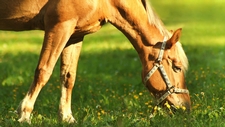Animal Needs

TEKS Objective
Students learn and identify that animals need air, water, food and a place to be by observing and comparing candy “gummy worms” to live worms, and building worm habitats.
Essential Understanding
The student knows that living organisms have basic needs that must be met for them to survive within their environment.
Science Background
Wildlife’s Requirements for Survival: Texas Parks and Wildlife (PDF) - Learn about the three basic needs of animals (food, water and shelter) and how to provide them when setting up backyard animal stations.
Wildlife’s Requirements for Survival
Texas Parks and Wildlife, www.tpwd.state.tx.us
What’s It Like Where You Live: Missouri Botanical Garden (website) - Interactive website, appropriate for teachers and students, with information about the world’s major biomes and types of ecosystems.
What’s It Like Where You Live
Missouri Botanical Garden, mbgnet.net
Aquatic Habitats, Homes for Aquatic Animals: Virginia Cooperative Extension (website) - Definitions and descriptions of many different aquatic habitats, with links to additional resources.
Signature Lesson
Animals’ Needs: BioEd Online (website) - Students learn that animals need air, water, food and a place to be by observing and comparing candy “gummy worms” to live worms, and building worm habitats.
- Supporting Lessons
- Extensions
- Assessment Ideas
- Literature Connections
- Related
TEKS - Additional Resources
Supporting Lessons
A Place to Be: BioEd Online (website) - All living things need a place to live and grow. In this activity, students learn and identify the basic needs of plants and animals, including shelter, or a place to be.
A Place to Be
BioEd Online, www.bioedonline.org
The Needs of Animals: Learn NC (website) - Students examine photographs of various farm animals, build an basic understanding of the needs of animals, and begin to learn that the animals’ needs have remained the same in different times.
The Needs of Animals
Learn NC, www.learnnc.org
What Animals Need to Live: Penn State University (website) - Students name the four things animals need to survive; define herbivore, carnivore, and omnivore; and understand the concept of an animal’s habitat.
What Animals Need to Live
Penn State University, School for Forest Resources, sfr.psu.edu
Elaboration Lessons and Extensions
Plant or Animal? BioEd Online (website) - Students learn about and compare the needs of two important groups of living things, plants and animals.
Plant or Animal?
BioEd Online, www.bioedonline.org
Exploring the Basic Needs of Animals: Lessons Alive (PDF) - Students learn that most living things have basic needs (air, food, water and shelter), identify the ways in which an animal’s habitat supports those needs, and observe the characteristics and behaviors of animals.
Exploring the Basic Needs of Animals
Lessons Alive, Agency for Instructional Technology, www.ait.net
What Animals Need: National Geographic (PDF) - Many young students do not have the background knowledge or oral/written communication skills needed for academic success. This interdisciplinary unit enables students to practice and improve their language skills while learning the basic needs of animals and guidelines for pet care.
What Animals Need
National Geographic Cengage Learning, www.ngsp.com
Assessment Ideas
Have each student draw a picture of his/her favorite animal and list or verbally describe its basic needs, including food, water and shelter.
Literature Connections
Basic Needs. Feldman, Jean (ISBN-13: 978-1615902132)
Animal Needs. Barraclough, Sue (ISBN-13: 978-1432914035)
Love Your World. Sirett, Dawn (ISBN-13: 978-0756645908)
Birds Build Nests. Winer, Yvonne (ISBN-13: 978-1570915017)
Living Things Need Food. Pigdon, Keith (ISBN-13: 978-0792243120)
Living Things Need Water. Street, Sharon (ISBN-13: 978-0792292111)
Additional Resources
Wild or Tame? The Humane Society of the United States (PDF) - Students learn to differentiate between wild and domestic animals, and are able illustrate the different ways their needs are met.
Wild or Tame?
The Humane Society of the United States, www.humanesociety.org
Youth and School Programs: Houston SPCA (website) - The Houston SPCA conducts shelter tours, day camps for kids, and humane education lessons; and will participate in career days, health and safety fairs, environmental fairs and other community-related programs with enough advanced notice.
TEKS Navigation
Grade 2
Need Assistance?
If you need help or have a question please use the links below to help resolve your problem.

Comments